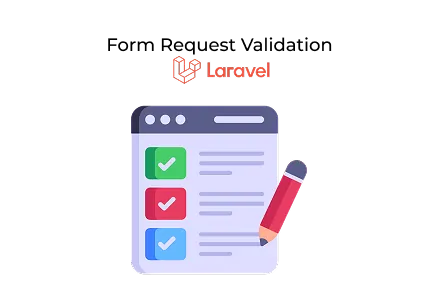Home - Scripts - Website Development

Laravel Form Request Validation with Custom Rules ensures accurate, reusable, and secure data handling, enhancing code organization and preserving validation logic effectively across applications.
Key Points
Form validation is a crucial part of any Laravel project. It guarantees that your application receives only valid and properly formatted data. In this tutorial, you’ll learn how to create a complete Form Request Validation Script in Laravel with Custom Rules, step by step.
We’ll build a straightforward User Registration Form that checks the following fields:
By the end of this guide, you’ll understand how to:
If you’re planning to build production-quality applications or want to hire Laravel developers to scale your project, these are the precise steps professionals follow.
First, open your terminal and use Composer to create a new Laravel project.
Once installation is complete, start the Laravel development server:
Visit the default Laravel page at:
http://127.0.0.1:8000
Next, we’ll create a controller to handle form submission and validation.
Run the command:
Now open the controller file located at:
Replace the content with the following:
This controller uses the StoreUserRequest class for validation, ensuring separation of logic, which is a best practice in custom web development.
Laravel offers a simple way to centralize validation logic through Form Request classes.
Run the following command:
Now open app/Http/Requests/StoreUserRequest.php and update it with:
This ensures that all form fields are validated based on the rules we specify.
Now we will create two custom rules: one for validating emails and another for phone numbers.
Run:
Then open app/Rules/ValidEmail.php and replace its content with:
This utilizes PHP’s built-in email validation. You can extend this logic for enterprise-level website development services that require domain or DNS verification.
Run:
Then open app/Rules/ValidPhone.php and replace its content with:
This rule verifies that the phone number has exactly 10 digits.
Create a new Blade file:
Add the following code:
This form will automatically display validation errors and show a green success message when the submission is valid.
Now open routes/web.php and add:
Add route:
Now, let’s test everything.
Start the Laravel server if it isn't already running.
Visit the form at:
http://127.0.0.1:8000/user-create
You’ve successfully created a Laravel Form Request Validation System with Custom Rules.
This method maintains a clean application structure, promotes reusability, and supports high code quality, which professional Laravel developers consistently highlight during custom web development projects.
Whether you’re an individual developer or a business providing website development services, mastering Laravel’s Form Request Validation system can greatly improve your application’s security and dependability.

©2025Digittrix Infotech Private Limited , All rights reserved.